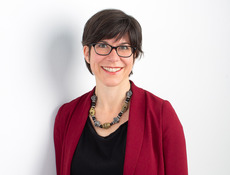In the last two years, hundreds of thousands of people from African and Asian countries have come to Europe. Thousands from the European continent itself – mostly from the Balkans – have also turned their backs on their homeland. These developments have created a migration surplus in countries like Germany where, in 2015, the number of people migrating to the country exceeded the number of those leaving by 1.139 million – a record high for the country. An approximate 1.16 million people applied for asylum in Germany in 2015 and 2016 respectively. Totaling 2.46 million in two years, these numbers account for a large share of all asylum applications within the EU and are also a record high for Germany.
![[Translate to English:] Mehrere Menschen laufen einen Weg entlang. Draufsicht aus der Vogelperspektive.](/fileadmin/files/_processed_/7/7/csm_410487713shutterstock_178995386_Premier_c557260f33.jpg)
Shutterstock / Adriano Castelli
Easing the burden on asylum systems requires disentangling flight and migration flows
While war or persecution are driving some to flee, others leave their homes because they cannot find work, feed their families or because they wish to secure a better life. A growing number of people from Africa and Asia have left for Europe, and the numbers of those migrating within the European continent are also growing. But it is often difficult to distinguish refugees from labor migrants. This places a heavy burden on asylum procedures and the system as a whole. What can we do to ease the burdens of a strained system?
Mixed migration is a problem for asylum systems
The sheer number of new arrivals alone poses a significant challenge to authorities as asylum applications must be examined and approved or rejected, housing must be provided, and people need to be integrated into cities and communities as well as local education systems and labor markets. Complicating matters is the fact that it is often very difficult to distinguish between refugees and labor migrants. The reasons driving people to migrate and the routes they take remain unclear. Upon arrival in a target country, many labor migrants try to obtain right of residency by applying for asylum. Their applications thus fall into the same pool of applications of those fleeing war or persecution in their homeland.
This form of "mixed migration" is overburdening the asylum systems of European states. It also makes it more difficult to protect refugees in formulating an effective, development-oriented migration policy. A recent study commissioned by the Bertelsmann Stiftung and authored by Steffen Angenendt, David Kipp and Amrei Meier of the German Institute for International and Security Affairs (SWP) captures the dynamics of mixed migration with the available qualitative and quantitative data. The study also offers policy recommendations to improve mechanisms for handling the phenomenon. The active support of stakeholders in civil society and the private sector is essential here.
Our video gives a short overview about the topic. It was produced in cooperation with our colleague Samuel George from the Bertelsmann Foundation in Washington D.C.:
Improved legal migration routes for refugees and migrants can help ease the burden
The study's authors recommend working together with source countries and others in creating more legal migration routes for refugees. Initial-intake countries must be provided support and other countries must be ready and willing to accept refugee quotas from the initial-intake countries through a so-called resettlement program. Given the current lack of political will for such a program at the EU level, willing national governments could take the lead by establishing their own quantitatively significant national programs – potentially in cooperation with other partner states. A measure of this nature, if proven effective, could be expanded into a European program.
Improved legal migration routes for labor migrants in particular could also help disentangle mixed migration flows. In Germany, for instance, there are currently more than 50 different routes used by those motivated to leave their homeland on economic grounds. Establishing points-based systems, as suggested by the study's authors, or reforming the current systems ideally centered on the EU Blue Card could render national migration systems in the EU more manageable and therefore more attractive.
Creating Ministries for Migration, Asylum and Integration would also provide relief
At the institutional level, creating independent national Ministries for Migration, Asylum and Integration would make sense. Such ministries, in which all issues related to immigration could be combined and coordinated – that is, from asylum to immigrants' labor-market integration – would have more freedom to develop and effectively implement coherent policies.




